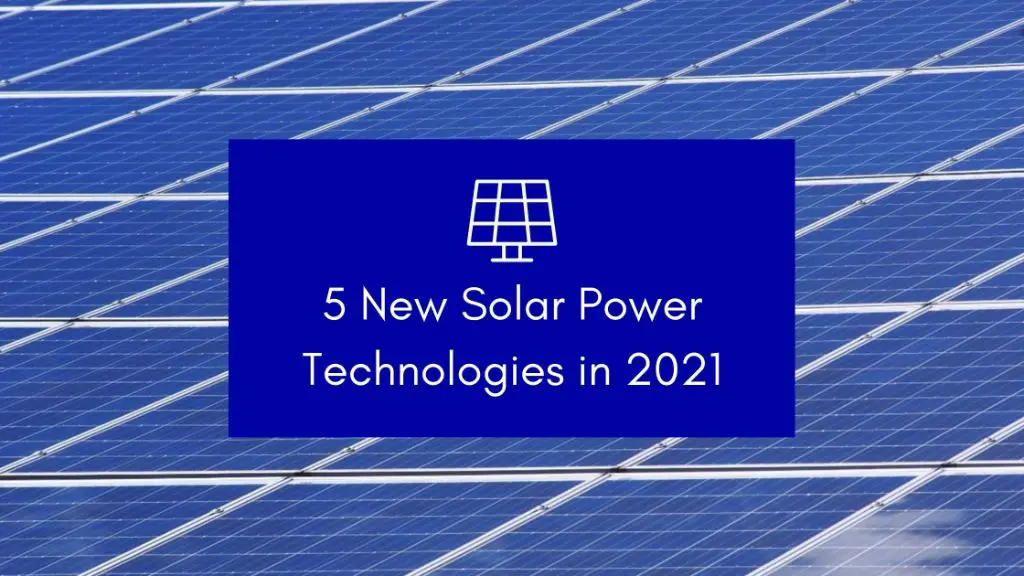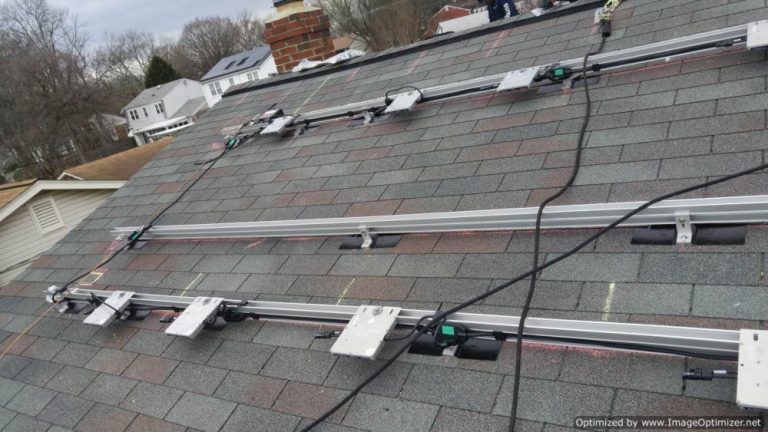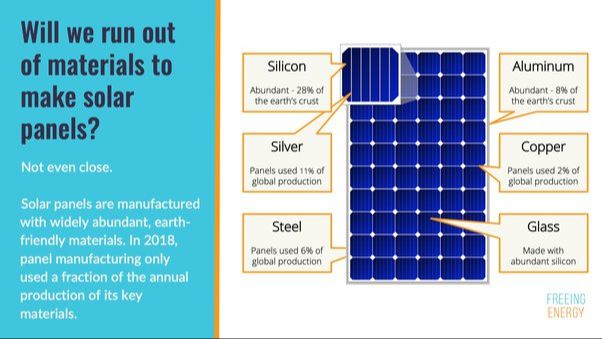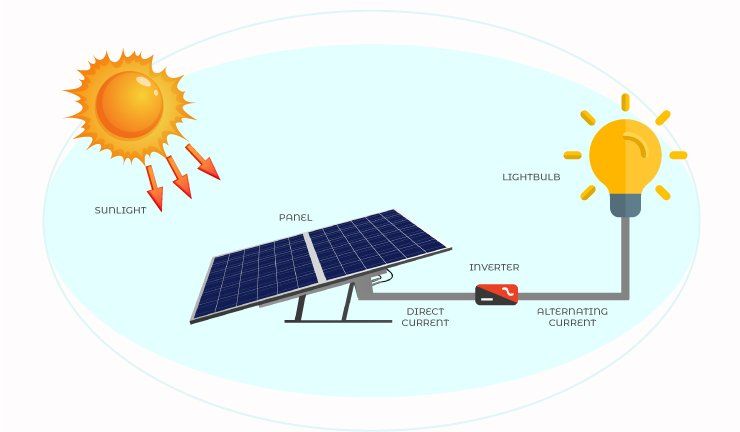What Is The Newest Technology In Solar?

Solar technology has emerged as a leading renewable energy source to meet the world’s growing electricity demands while reducing dependence on fossil fuels. According to the International Energy Agency (IEA), solar PV accounted for 4.5% of total global electricity generation in 2020, making it the third largest renewable electricity technology behind hydropower and wind power. With costs continuing to fall and solar technology improving, adoption of solar power is accelerating around the world. Global solar generation has grown from under 10 TWh in 2000 to over 900 TWh in 2020, an average annual growth rate of 49% (1). This rapid growth is expected to continue as solar becomes increasingly cost competitive with conventional power sources.
With solar power playing a pivotal role in the global energy transition, there has been tremendous innovation in solar technologies in recent years. From new advanced materials to smart solar designs, researchers are finding ways to make solar panels cheaper, more efficient, and accessible to a wider range of applications. This article provides an overview of some of the newest and most promising solar technologies emerging today.
Perovskite Solar Cells
Perovskites refer to a class of materials with a specific crystal structure that have emerged as a breakthrough technology for solar cells. Perovskites have the chemical structure ABX3, where A and B are cations of different sizes and X is an anion that bonds to both (1).
Perovskite solar cells have rapidly increased in efficiency from 3.8% in 2009 to over 25% today, rivaling traditional silicon solar cells. They also have the advantages of low-cost processing techniques and flexibility. Key innovations that have improved perovskite solar cell efficiency and stability include:
- Using mixed halide perovskites with bromide and iodide (2)
- Adding larger organic cations like formamidinium that allow for a broader light absorption range (3)
- Using two-dimensional perovskite materials with natural quantum well structures (4)
- Enhancing charge transport and extraction using nanostructured electrodes (5)
- Developing low-temperature solution-processed hole transport layers (6)
With rapid increases in performance and stability combined with simple and scalable manufacturing methods, perovskites are poised to transform the solar industry by enabling high efficiency, lightweight and flexible solar cells at even lower costs.
(1) https://www.mdpi.com/2076-3417/9/24/5510
(2) https://www.youtube.com/watch?v=RU5SnJZcKro
Organic Photovoltaics
Organic photovoltaics, also known as polymer solar cells, are made from thin films of organic semiconductors such as polymers and small-molecule compounds. They have gained interest in recent years due to their flexibility, ease of processing, and potential for low-cost production (https://www.energy.gov/eere/solar/organic-photovoltaics-research).
Advances in organic PV materials have focused on polymer and dye-sensitized solar cells. Polymer solar cells use semiconducting organic polymers that absorb light and generate charge carriers. Dye-sensitized solar cells absorb light using photosensitive dyes on a semiconductor surface. Both technologies allow the production of flexible, lightweight solar panels that can be made semi-transparent (https://pubs.acs.org/doi/10.1021/ar900238j).
The flexibility and semi-transparency of organic PV opens up unique applications not possible with traditional panels. Potential uses include building-integrated photovoltaics, portable chargers, and integration into fabrics. While efficiencies are still lagging behind conventional solar panels, organic PV provides an inexpensive and versatile complementary technology (https://www.ncbi.nlm.nih.gov/pmc/articles/PMC9501031/). With continued advances in materials and manufacturing, organic photovoltaics have the potential to further expand solar energy applications.
Solar Tracking
Solar tracking systems orient solar panels to follow the sun’s trajectory throughout the day, allowing them to capture more direct sunlight. Single-axis trackers tilt solar panels along one axis – either horizontal or vertical – to track the sun from east to west. Dual-axis trackers can tilt horizontally and vertically to optimize sunlight capture (Maximizing Efficiency with Solar Panel Tracking Systems, 2023).
Compared to fixed solar panels, tracking systems can increase energy production by 25-40% depending on location (Solar Tracking Systems Optimizing Sunlight Utilization in Construction, 2023). This maximizes the return on investment for solar power systems. Some innovative tracking technologies use sensors or algorithms to precisely calibrate the orientation of panels.
Overall, solar tracking allows for greater energy generation density in a smaller footprint. The tradeoffs are higher maintenance needs and costs compared to fixed tilt systems. But for utility-scale solar farms or any application maximizing power production, trackers are an impactful innovation.
Floating Solar Arrays
Floating solar farms refer to photovoltaic systems installed on bodies of water such as lakes, reservoirs, and ponds. They have emerged as an innovative solution to land constraints for building large-scale solar projects. Some key benefits of floating solar technology include:
Utilizing vacant water surface areas that would otherwise be unused. This avoids taking up precious land that could be used for other purposes.1
Increased solar PV efficiency due to the cooling effects of being surrounded by water. This can boost energy generation by 5-15%.2
Reduced water evaporation and algae growth by providing shade over the body of water.
Challenges for floating solar include higher capital costs, potential weather impacts, and ecological considerations. Careful design is needed to withstand wind, waves, and water currents.
Some major floating solar projects include:
– The Yamakura Dam Solar Park in Japan, one of the world’s largest at 70 MW capacity.1
– The Cirata floating solar park in Indonesia at 145 MW capacity.
– The Huainan floating solar farm in China, spanning 120 hectares.
– The Saemangeum solar park in South Korea, which will have a 400 MW capacity when complete.
Solar Windows
Solar window technology generates electricity by embedding solar cells into glass windows. Instead of opaque solar panels, solar windows allow natural light to pass through while also producing electricity. This makes solar windows ideal for installation in homes and buildings. Recent innovations have focused on improving the efficiency and transparency of solar windows.
In 2021, SolarWindow reported doubling the efficiency of their solar windows to 14.72%, setting a new record. They were able to achieve this by using industry standard single-cell patterning.
In 2022, researchers at the University of Michigan broke a record by reaching 8.1% efficiency with 43.3% transparency using an organic solar cell design. This organic approach aims to improve transparency compared to conventional silicon solar cells. Their transparent solar window technology could be installed in homes and buildings to produce electricity while letting in natural light.
Solar Roof Shingles
Integrated solar shingles and tiles offer an alternative to traditional roof-mounted solar panels. Solar shingles are photovoltaic cells designed to look like and integrate with conventional asphalt shingles, tiles, or slates on a roof. Companies like Tesla, CertainTeed, and GAF Energy manufacture solar roof shingles and tiles. Key advantages compared to solar panels include aesthetics and protection. Solar shingles allow homeowners to capture solar energy while maintaining the look of a traditional roof. The integrated structure also provides weather protection, impact resistance, and eliminates roof penetrations needed for panels (1).
However, solar shingles have some downsides versus standard solar panels. They tend to be more expensive, with solar shingles costing around $19-$25 per square foot compared to $14-22 per square foot for panels (2). Efficiency is lower, usually around half that of a solar panel. Output is limited by orientation and shading parts of the roof. Labor costs tend to be higher to integrate wiring during roof installation. Overall, solar shingles provide homeowners an option for production and aesthetics, but with higher costs and lower efficiency versus solar panels.
(1) https://rst-roofing.com/blogs/solar-roof-shingles-vs-panels/
(2) https://dabella.us/solar-shingles-vs-solar-panels/
Solar Thermal Technology
Solar thermal systems use solar energy to heat water or air. Recent advances in solar thermal technology have focused on improving efficiency and reducing costs. One area of innovation is in closed-loop systems, which circulate heat transfer fluid through collectors and then a heat exchanger to heat water. Advances like improved system controls and freeze protection allow these systems to operate more efficiently in colder climates (Closed-Loop Solar Thermal Troubleshooting Training | Tech-Labs).
Another recent development is the use of evacuated tube collectors, which use glass tubes surrounded by a vacuum to reduce conductive and convective heat loss. This allows the collectors to achieve higher temperatures and operate more efficiently in cold weather (About Us – Solar Pros). Evacuated tube systems can also be designed as direct systems that directly heat water within the tubes, eliminating the need for a separate heat exchanger.
In general, advances in materials, selective coatings, and system controls have increased the efficiency of solar thermal systems. Proper installation and maintenance is also critical for optimal performance and can be improved through training on the latest technologies (Closed-Loop Solar Thermal Troubleshooting Training). With continuing innovation, solar thermal systems are becoming more cost-competitive for residential and commercial applications.
Solar Innovations in Developing Countries
Solar power has tremendous potential to bring electricity to the 1.2 billion people in the world who currently lack access to it Solar Power Use For Developing Countries. Innovations in solar technology are making renewables more affordable and practical for developing nations. Some examples include:
Pay-as-you-go solar home systems allow people to pay small amounts over time via mobile money to eventually own a solar system. Companies like M-KOPA in Kenya, Mobisol in Tanzania, and BBOXX in Rwanda are providing pay-as-you-go solar to millions across Africa.
Mini-grids utilize solar and battery storage to provide entire villages with electricity. Companies like Husk Power Systems have installed over 300 mini-grids in India and Africa.
Solar irrigation pumps are replacing expensive diesel pumps and enabling farmers to grow more diverse and valuable crops. Solar microgrids also allow for cold storage and refrigeration to reduce food waste.
Solar lanterns and lighting allow students to study at night and provide light for households. This improves education, safety, and quality of life. Solar Sister has sold over 670,000 solar lamps in Sub-Saharan Africa.
These innovations are increasing access to electricity for the rural poor, reducing reliance on dirty kerosene lamps, improving agricultural yields, enabling businesses and entrepreneurship after daylight hours, and overall enhancing quality of life. Solar has great potential to empower developing nations.
Conclusion
In this overview, we explored some of the latest innovations in solar technology, from perovskite solar cells to solar roof shingles. Perovskites show promise as a low-cost, efficient material that could replace silicon in solar panels. Organic PV uses carbon-based materials to absorb light, reducing manufacturing costs. Solar tracking maximizes energy production by moving panels to follow the sun. Floating solar arrays allow solar farms to be built on bodies of water. Solar windows and roof shingles integrate PV technologies into buildings in new ways.
Solar is on track to continue its rapid growth as costs fall and efficiencies rise. With climate change demanding urgent action, solar energy will play a key role in the transition to renewable power. Supportive government policies can accelerate adoption. Future advances in materials science, software, storage technology and manufacturing will unlock new capabilities. The outlook is bright for solar innovations to achieve grid parity, mitigate greenhouse gas emissions and bring affordable, renewable electricity to communities across the globe.






